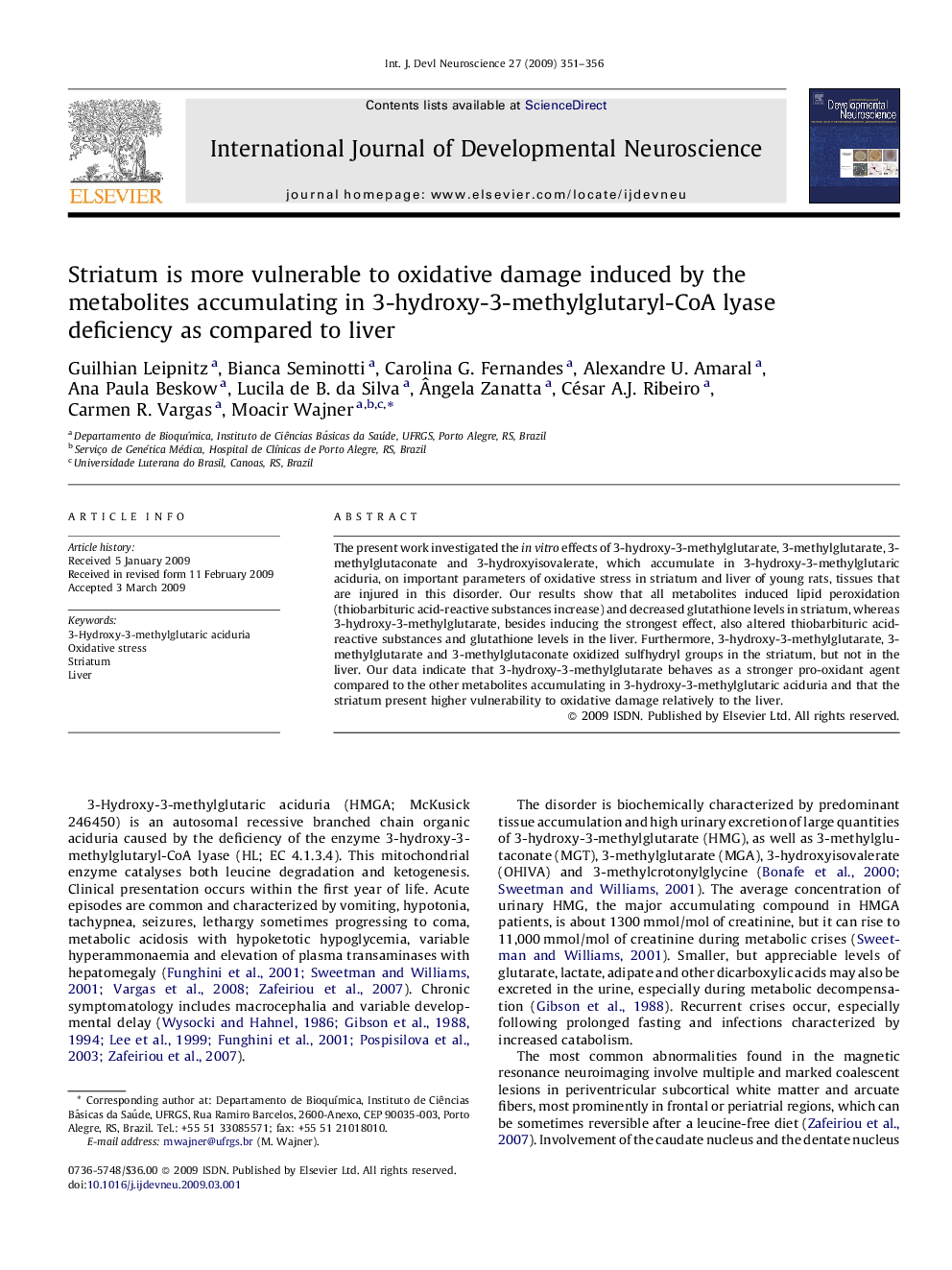| Article ID | Journal | Published Year | Pages | File Type |
|---|---|---|---|---|
| 2786967 | International Journal of Developmental Neuroscience | 2009 | 6 Pages |
The present work investigated the in vitro effects of 3-hydroxy-3-methylglutarate, 3-methylglutarate, 3-methylglutaconate and 3-hydroxyisovalerate, which accumulate in 3-hydroxy-3-methylglutaric aciduria, on important parameters of oxidative stress in striatum and liver of young rats, tissues that are injured in this disorder. Our results show that all metabolites induced lipid peroxidation (thiobarbituric acid-reactive substances increase) and decreased glutathione levels in striatum, whereas 3-hydroxy-3-methylglutarate, besides inducing the strongest effect, also altered thiobarbituric acid-reactive substances and glutathione levels in the liver. Furthermore, 3-hydroxy-3-methylglutarate, 3-methylglutarate and 3-methylglutaconate oxidized sulfhydryl groups in the striatum, but not in the liver. Our data indicate that 3-hydroxy-3-methylglutarate behaves as a stronger pro-oxidant agent compared to the other metabolites accumulating in 3-hydroxy-3-methylglutaric aciduria and that the striatum present higher vulnerability to oxidative damage relatively to the liver.
